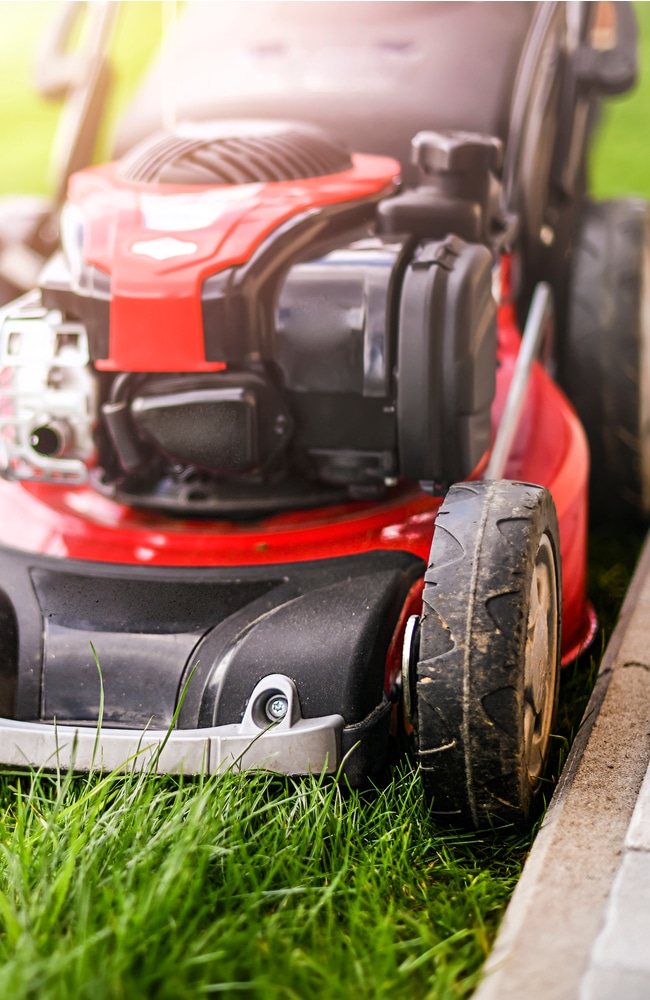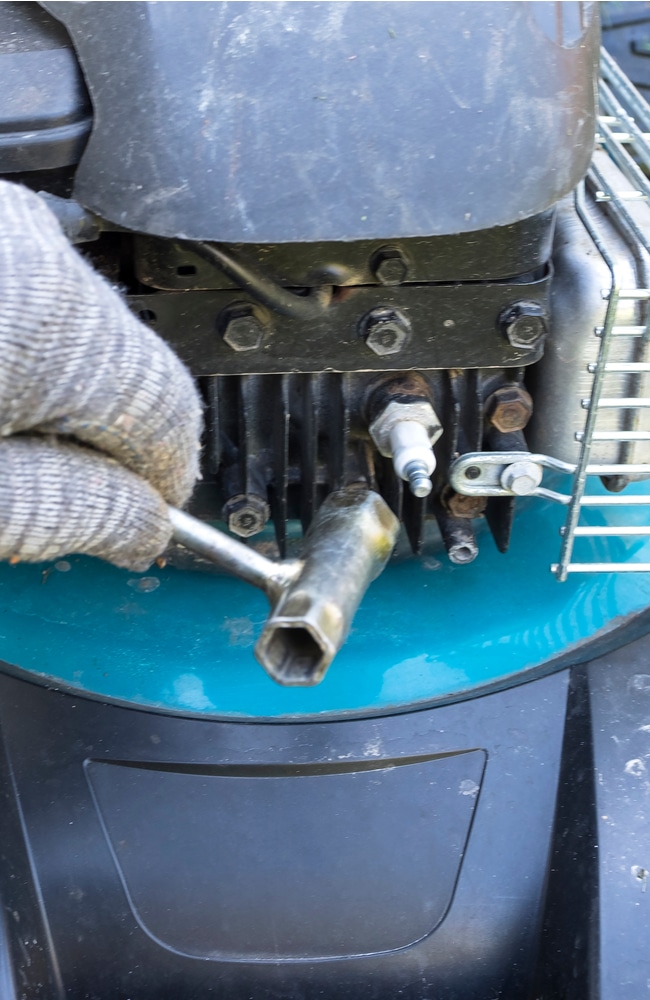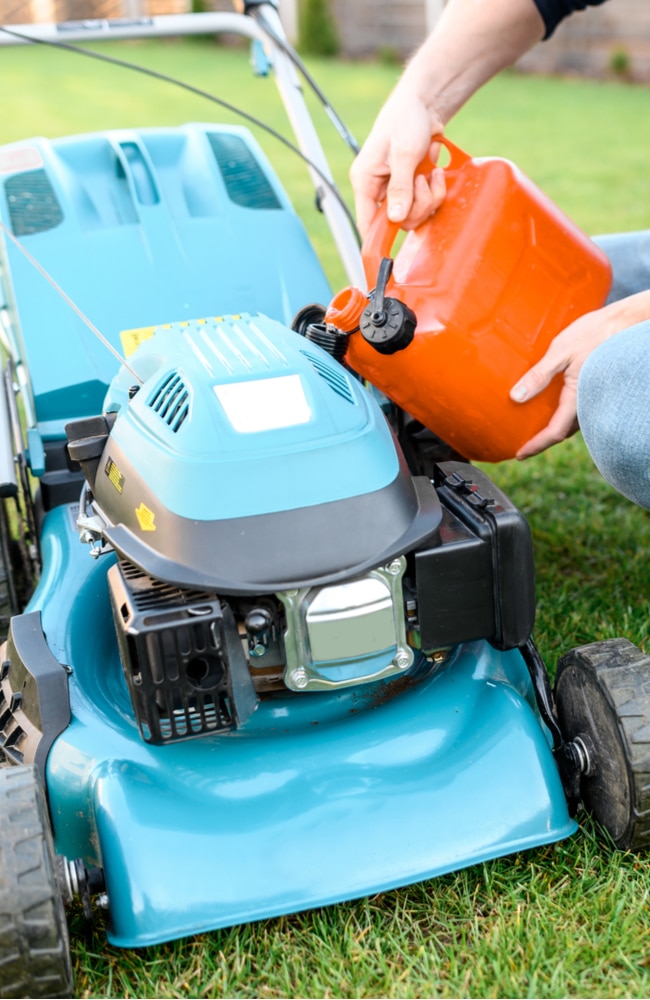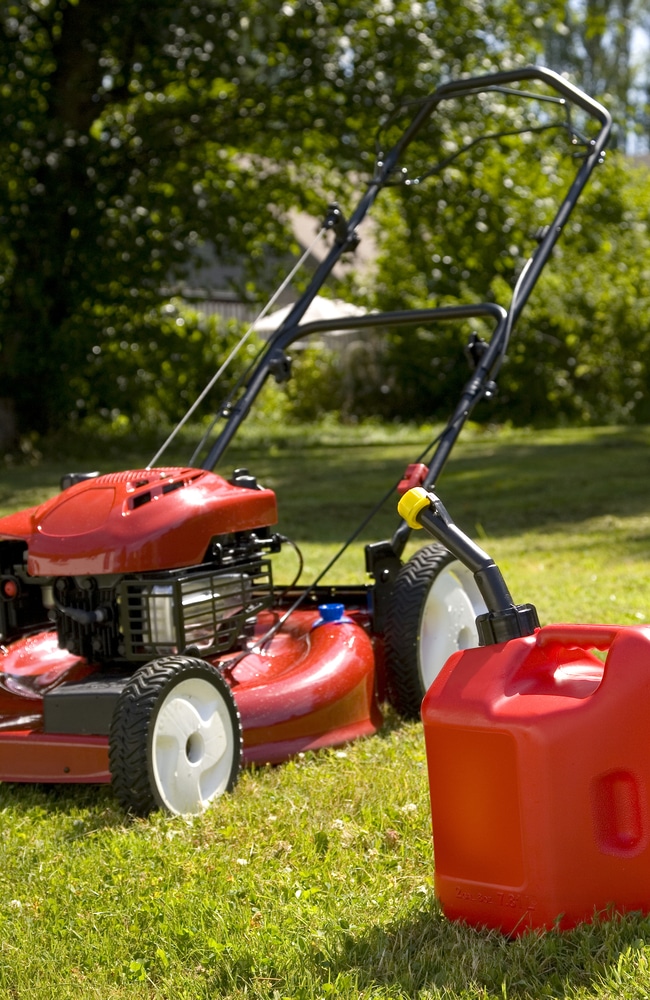CAUTION: Fuel and its vapors are extremely flammable and explosive. Always handle fuel with extreme care.
If you mow your own lawn, then you’re definitely familiar with gasoline. But did you know that if you leave this flammable liquid in your engine for too long or store it improperly, it can lead down to the breakdown of your lawn mower?
Perhaps this is something you never considered. Maybe you didn’t even know that there are instances where you need to drain the fuel out of your lawn mower. Or perhaps you know that it needs to be done, but you don’t know how to do it.
If this describes you, then you definitely need to read this whole article.
Taking care of your lawn is much more than just mowing it appropriately. You also make sure to fertilize your lawn so that your grass receives the proper nutrients. Make sure to check out our article!
We will discuss why you need to drain the fuel tank and explain why it should be done.
To wrap it up, we will describe the different methods you can use to drain the gasoline from the engines of different kinds of lawn mowers.
So, whether you are doing this for the very first time or simply need a refresher course to hone your skills, everything you find here will teach you what to do when the time comes to empty the tank.

Why Does It Need to Be Drained?
You have spent the last few months diligently mowing your lawn. But now the weather is beginning to turn cold, and the grass has stopped growing. The mowing season has come to an end.
A common mistake to make is to put the mower in the garage and leave the remaining fuel in the engine. But then, when it’s time to take out the machine in the spring, you have trouble making the engine run correctly.
It sputters. It hesitates. Sometimes, the machine won’t fire up at all.
You scratch your head and wonder, “What’s the problem?”

One of the primary problems is that everything sat unused in storage for months.
Gasoline is a combustible liquid that relies on volatile compounds to burn. Over time, these compounds evaporate. That makes the fuel less combustible and is obviously not good.
In addition, as the compounds evaporate, they create gummy-like deposits throughout the engine’s entire fuel system.
The deposits will sink to the bottom of the fuel tank and further reduce the quality of the gasoline. When you start the engine, the old fuel runs through the motor and clogs up the fuel line, fuel filter, and carburetor. This can cause your lawn mower to stop working altogether.
To avoid such a costly mistake, drain the tank before you put the machine away for the winter and keep your lawn mower in good working condition.
It is a critical step in the winterization of your lawn mower and other pieces of equipment, like trimmers and leaf blowers. Just like your lawn needs to be winterized, so too does your lawn equipment.
It is also worth considering that fuel can go stale in as little as 30 days. So if you’re going out of town for business or know you won’t be able to take care of your lawn for an extended period of time, consider draining the tank of your lawn mower then as well.

How Do You Siphon the Gas from a Lawn Mower?
Siphoning is a tried-and-true method for emptying liquid from a tank. It works well for machines that don’t have fuel lines that are easy to reach and disconnect.
This goes not only for lawn equipment, but also for vehicle tanks. If necessary, you can use a siphon as a go-to technique.
While siphoning empties fuel from the tank effectively, keep in mind that it will leave some liquid in the fuel line, fuel filter, and carburetor.
Here are the steps to take if you choose to use a siphon to drain a tank.
Step 1: Prepare the Engine
A fuel stabilizer is a treatment that extends the life of the gasoline in the engine. The additives in the stabilizer prevent the fuel from breaking down into gummy deposits and keep it fresh for longer periods of time.
So before you drain the tank, add a fuel stabilizer and allow the motor to run for a few minutes. This will circulate the stabilizer through the fuel line, the fuel filter, the tank, and the carburetor.
The treated gasoline that is left behind in these parts of the fuel system will remain combustible and won’t hurt the engine.

Step 2: Cool Down on a Flat Surface
Once you have circulated the fuel through the engine, allow it to cool down before you begin working on it.
Whether you have a push mower or a riding mower, you need to ensure you are operating on a flat surface.
If the machine is not on even surface, oil from the oil reservoir will run out and cover other parts of the motor. So a flat, even surface is key.
If you are working on a riding mower, engage the emergency brake to ensure the machine doesn’t move.
Because the force behind the siphon technique is gravity, the container that the liquid will be siphoned into must be lower in elevation than the tank.
An easy way to ensure that a push mower is resting on a flat surface is to place the deck of the mower onto two saw horses. Space the saw horses close enough to fit within the wheelbase of the mower. Prepare for some heavy lifting.
Step 3: Pull the Plug
To avoid potential hazards and danger, disconnect the spark plug wire and remove the spark plug. This way, you can be sure that the engine won’t start up accidentally.
This will also ensure that a spark plug doesn’t accidentally start a spark while a combustible liquid is flowing outside of the tank. One spark can ignite it and cause a potentially deadly explosion.

Step 4: Choose Your Method
There are three different methods you can use to empty a tank. Each involves a clear hose, a container placed below the tank, and gravity. Here is a quick look at the different methods:
Method 1: Increasing the Internal Air Pressure
You will need a clear hose cut into two different lengths: one short and one long.
The longer hose will be run from the container on the ground into the gas tank. This hose should rest on the bottom of the tank to ensure that it is submerged in the fuel.
The shorter hose will also be inserted into the tank. However, it will remain above the fuel level line in the tank.
Use an old, wet shop rag to seal the gap around the two hoses so that air cannot escape the tank.
Once the cap is sealed, blow air into the tank through the shorter tube. Blowing into the tube, either with your mouth or with an air compressor, increases the air pressure within the tank. This will cause the liquid to flow through the longer tube and down into your container.
Once the fuel begins to flow freely, you no longer need to blow air into the shorter piece of hose. By this point, gravity has taken over and will finish the job on its own.

Method 2: Siphon Pump
The safest, fastest, and most convenient way to siphon gasoline is to use a siphon pump.
Some pumps are automatic and only require you to flip a switch, while others are operated manually.
No matter which style of siphon pump you use, they all function in basically the same manner.
Siphon pumps consist of clear tubing with a pump in the middle. The pump provides the initial suction required for the liquid to begin flowing.
Once it is steadily flowing through the tubing, gravity will take over and finish the rest.
The tubing on a siphon pump has two different ends that serve distinct purposes. So make sure you don’t put the hose in backward. The side of the hose that goes into the tank is generally the brass end.
Insert the brass end into the tank and submerge it in the fuel. Squeeze the pump a few times to begin the required suction, and then watch the liquid flow.
Method 3: The Last Resort
Honestly, you are unlikely to use this method of siphoning gas. This way is generally reserved for emergencies and criminal activities. It’s a means to an end if you have exhausted all of your other options.
As with the other two methods, clear tubing is non-negotiable, as you are basically turning the hose into a straw.
Take one long piece of clear tubing and insert it into the tank. Make sure the end of the hose is submerged in the fuel.
The other end goes into your mouth.
You will use your mouth to create the suction required for the liquid to begin flowing through the tube.
Keep a close eye on the tube, so you can see the gas when it begins to flow. Ethanol is not the kind of alcohol you want to drink, so make sure it doesn’t get into your mouth.
It’s a good idea to have your hand wrapped around the tube, ready to pinch it off quickly to stop the flow.
Once the liquid begins flowing, quickly remove the hose from your mouth and place it in the container on the ground. As with the other methods, at this point, gravity will do all the work for you.

Step 5: Since You’re Already Down There…
Once you have removed the hoses and cleaned up any spills, it’s a good idea to do some additional preventative maintenance on your lawn mower.
Check the air filter to ensure it isn’t clogged with debris. If it’s dirty, consider changing the air filter. Air filters are a crucial component in keeping any engine running smoothly.
You need to make sure the oil reservoir is full of clean oil and filled to the right level. Unscrew the oil filter and ensure the adapter is free of dirt and debris. If you’ve noticed that your machine stopped performing at a high level, it might be time to change the oil filter.
Step 6: The Final Clean Up
If possible, put a little bit of fresh fuel into the tank and slosh it around to dislodge any remaining residual debris. Then drain it out of the engine just as you did with the old gas.
Allow the engine to dry for a few minutes. No matter how well you think you emptied the tank, there is always a little fuel remaining. The best way to dryout the engine is to use an air compressor to blow-dry the tank’s interior.
Once you’ve removed all of the fuel, you can replace the spark plug and the spark plug wire.
Set your push mower back on the ground. Your work is done.

Draining Gas Without a Siphon
How do you drain gas from an engine without using a siphon? There are a few different ways to do that.
Start Your Engines
The one that requires the least effort, but takes the longest, is simply running the engine until it is out of fuel. Just make sure you add the fuel stabilizer before you crank it up. That way, any liquid left in the engine will have been treated and won’t break down over the winter months.
The Lucky Few With Fuel Lines Connected Directly to Carburetors
If you are fortunate, you might have a mower with a fuel line that connects directly to the carburetor and is easy to reach.
If you have a lawn mower like this, grab a container for the fuel and disconnect the fuel line from the carburetor. This will allow the fuel to flow from the tank through the line and into the receptacle.
Once the tank is completely emptied, attach the fuel line back to the carburetor.
That’s it. Don’t forget to check the air and oil filters along with the oil level.
Turkey Baster Method
Imagine this worst-case scenario: You can’t run the motor at all because the fuel has gone bad, you don’t have a siphon pump or any clear tubing, and you can’t get to the fuel line to drain the tank.
What can you do?
It may sound silly, but venture into the kitchen and grab a turkey baster.
Yes, a turkey baster.
Put the baster into the tank and squeeze the baster’s bulb for suction. The baster will fill up with liquid, which you can then put it into a proper receptacle.
This may take a little time and feel a bit odd, but it is an effective tool for draining gasoline. Just make sure you don’t put the baster back into the kitchen drawer when you are done!


Thank you for sharing this. I don’t have any of those tools except a turkey baster. The lawn mower doesn’t work. I want to put it out for removal but I don’t want to leave it with gas in it nor do I want to spend money on tools for a broken lawnmower. This definetely helps! Thanks again!